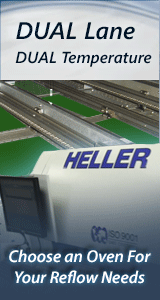Printed Circuit Board Assembly & PCB Design Forum
SMT electronics assembly manufacturing forum.
- SMTnet
- »
- Electronics Forum
- »
- Solder Ball Dispersion Test (String Solder)
Solder Ball Dispersion Test (String Solder)
Views: 1704
![]() Our customer is asking for a solder ball dispersion test on ...
- May 03, 2018
by
Don Adams
Our customer is asking for a solder ball dispersion test on ...
- May 03, 2018
by
Don Adams
![]()
![]()
![]() Bob Willis (was the first I knew of) that has a splatter tes...
- May 03, 2018
by
SolderingPRO
Bob Willis (was the first I knew of) that has a splatter tes...
- May 03, 2018
by
SolderingPRO
![]()
![]()
![]() Thanks for your response, I changed the attachment to a PDF...
- May 04, 2018
by
Don Adams
Thanks for your response, I changed the attachment to a PDF...
- May 04, 2018
by
Don Adams
![]()
![]()
![]() For best / most accurate results, I would imagine you will n...
- May 04, 2018
by
SolderingPRO
For best / most accurate results, I would imagine you will n...
- May 04, 2018
by
SolderingPRO
![]()
- SMTnet
- »
- Electronics Forum
- »
- Solder Ball Dispersion Test (String Solder)







